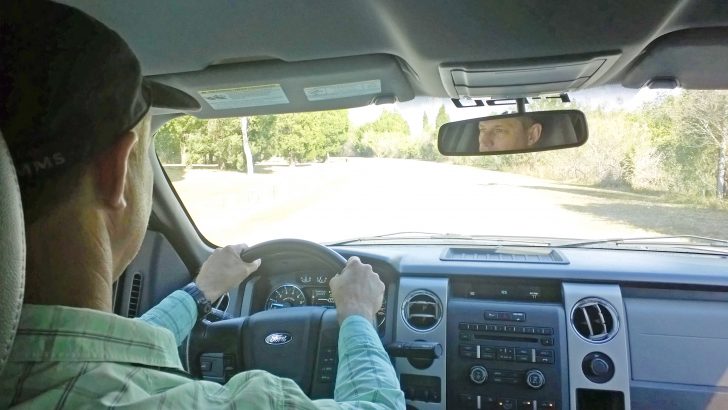By: Chris O’Byrne

Recently, as I coached a client to think about her next cast, I directed her with the words of my long ago driving instructor, Coach Small, “Constantly look around.” In fly fishing and driving, the higher performers make conscious efforts to see more of what is going on.
As Coach Small would tell his class of fourteen-year-old boys, (I don’t know what he told the girls) “Drivers who look out are drivers who look good.” Because they have no wriggling bait or scented oils attracting the fish, fly anglers who look good in grip and grin pictures actively look out for signs of fish. They note things like the physical places where fish might be, weather patterns that might turn on, activity and the subtle disturbances that active fish make in their environment.

As potential calamities developed while we were on the road, Coach would remind us to, “Scan a wide area.” Just the same, many a fish has been caught by the angler who picks up on the least sign of life, like the flick of light which gives away an otherwise camouflaged fish. Seeing what is going on in and around a piece of water is not just a useful skill, it is part of the pleasure of the active method of angling that fly fishing should be. If a fly angler’s mind wanders; controlling the music, thinking about work, or escaping the heat, they miss signs of fish activity. That moment when our presentation is complete and we are ready to pick up the fly for another cast is a great time to scan as if we are behind the wheel.
On the road, Coach would teach us, “Drivers that get home use their peripheral vision to see hazards.” Similarly, fishy anglers use their peripheral vision to watch their surroundings. No matter how delicate our cast, when the fly lands there is a disturbance in the water which, for a few moments hides that activity near to the fly, leader and fly line. This is one chance we have to check out the area around the fly with our outer vision. The ability to pick up a fly forty or fifty feet away from us is one of the big advantages fly anglers have, but only if we see those fliting signs of far off fish.
While we waited at those frustrating stop lights in that old Chevy Coach Small would encourage, “Use your vision, even here.” Down time is also an opportunity for fly anglers who continue to use their vision. What are the clouds doing? Are the trees giving away signs of the wind? Where has the shade moved too? Is something new happening in that spot where we missed the fish earlier? Should we check behind us, just in case? How deep is the water?
The common denominator between safe driving and successful fly fishing is the constant mental and visual activity that will keep you driving to several fish days!
